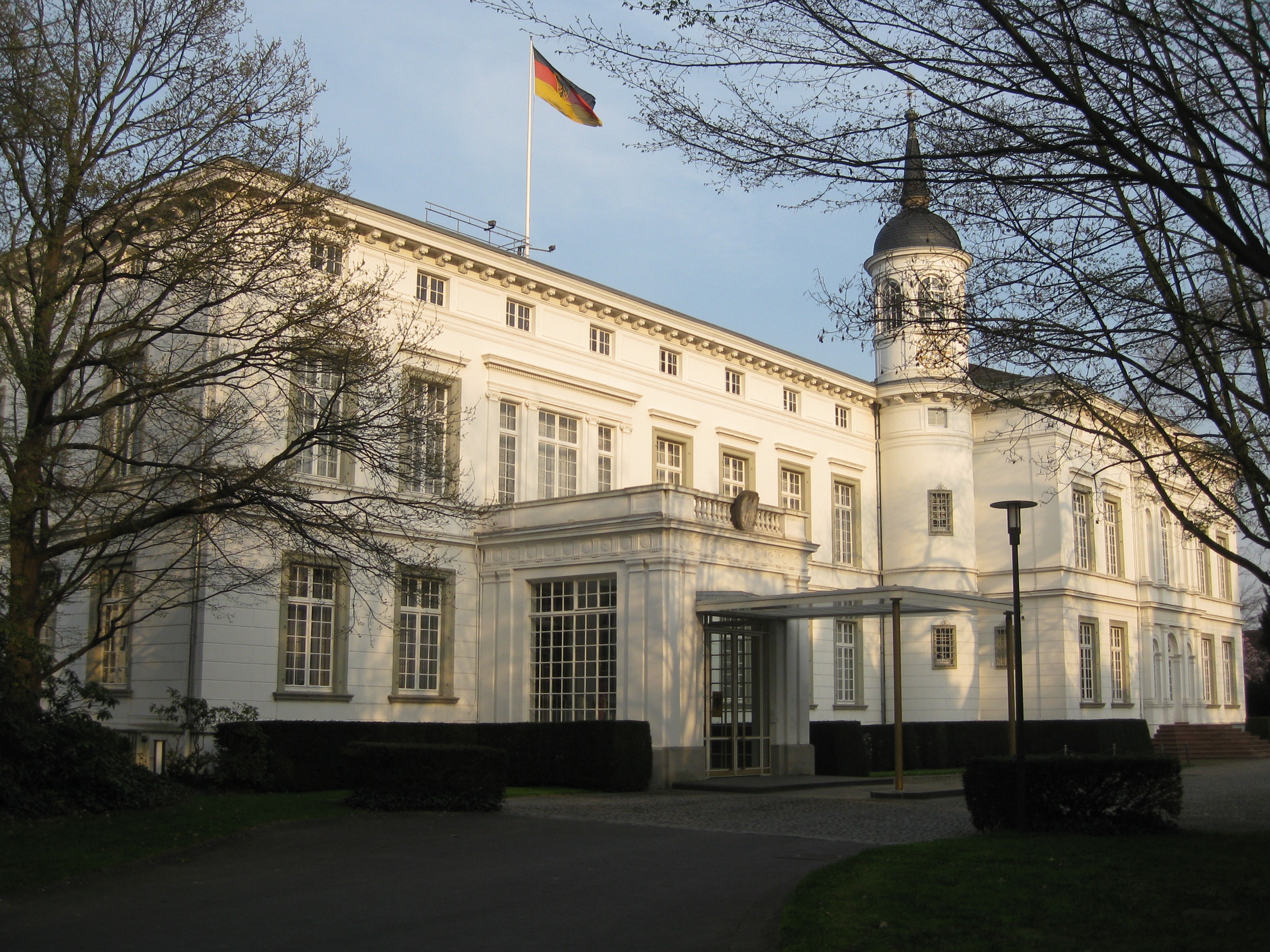Palais Schaumburg on:
[Wikipedia]
[Google]
[Amazon]


 Palais Schaumburg is a neoclassical-style building in
Palais Schaumburg is a neoclassical-style building in
Online-Panorama-Tour
The virtual tour shows all exhibition rooms as well as three views from the outside, providing a look at the building and the park.
Online-Panorama of the Palais Schaumburg
on the official website of the ''Stiftung Haus der Geschichte der Bundesrepublik Deutschland'' {{Authority control Buildings and structures in Bonn Official residences in Germany Palaces in North Rhine-Westphalia Neoclassical architecture in Germany Presidential residences

Bonn
The federal city of Bonn ( lat, Bonna) is a city on the banks of the Rhine in the German state of North Rhine-Westphalia, with a population of over 300,000. About south-southeast of Cologne, Bonn is in the southernmost part of the Rhine-Ruhr r ...
, Germany, which served as the primary official seat of the German Federal Chancellery and the primary official residence of the Chancellor of the Federal Republic of Germany
The chancellor of Germany, officially the federal chancellor of the Federal Republic of Germany,; often shortened to ''Bundeskanzler''/''Bundeskanzlerin'', / is the head of the federal government of Germany and the commander in chief of the G ...
from 1949 until 1976. As the headquarters of the Federal Chancellery, it was simply known as ''the House of the Federal Chancellor'' (german: Haus des Bundeskanzlers). Since 2001, Palais Schaumburg has served as the secondary official seat of the German Federal Chancellery and the secondary official residence of the Chancellor of the Federal Republic of Germany.
History
The late neoclassical palais was constructed between 1858 and 1860 for the cloth manufacturer Wilhelm Loeschigk. Bought byPrince Adolf of Schaumburg-Lippe
Prince Adolf of Schaumburg-Lippe (german: Adolf Wilhelm Viktor; 20 July 1859 – 9 July 1916) was a German prince of the House of Schaumburg-Lippe and a Prussian General of the Cavalry. He was regent of the Principality of Lippe from 1895 t ...
, it was expanded during the following years. On January 31, 1939, the army bought the palace from Ernst Wolrad, Prince of Schaumburg-Lippe.
After World War II
World War II or the Second World War, often abbreviated as WWII or WW2, was a world war that lasted from 1939 to 1945. It involved the vast majority of the world's countries—including all of the great powers—forming two opposin ...
, the Belgian Army
The Land Component ( nl, Landcomponent, french: Composante terre) is the land branch of the Belgian Armed Forces. The King of the Belgians is the commander in chief. The current chief of staff of the Land Component is Major-General Pierre Gérard. ...
staff used the building until it became the official seat of the first chancellor of the Federal Republic, Konrad Adenauer
Konrad Hermann Joseph Adenauer (; 5 January 1876 – 19 April 1967) was a Germany, German statesman who served as the first Chancellor of Germany, chancellor of the Federal Republic of Germany from 1949 to 1963. From 1946 to 1966, he was the fir ...
, in November 1949. Two months later, he greeted the new republic’s first state guest, Robert Schuman
Jean-Baptiste Nicolas Robert Schuman (; 29 June 18864 September 1963) was a Luxembourg-born French statesman. Schuman was a Christian Democrat (Popular Republican Movement) political thinker and activist. Twice Prime Minister of France, a ref ...
.
Hans Schwippert
Hans may refer to:
__NOTOC__ People
* Hans (name), a masculine given name
* Hans Raj Hans, Indian singer and politician
** Navraj Hans, Indian singer, actor, entrepreneur, cricket player and performer, son of Hans Raj Hans
** Yuvraj Hans, Punjabi ...
rebuilt the building for the use as a Federal Chancellery in 1950. It was also extended by the so-called houses 2 and 3. By 1976, more space was needed, so a new building was planned. Some departments remained in the palais, which remained in use for ceremonial purposes. In 1963, the ''Wohn- und Empfangsgebäude des Bundeskanzlers'', the so-called Chancellor bungalow ( Kanzlerbungalow), in the modern style of architect Sep Ruf
Sep Ruf (full name Franz Joseph Ruf; 9 March 1908, in Munich – 29 July 1982, in Munich) was a German architect and designer strongly associated with the Bauhaus group. He was one of the representatives of modern architecture in Germany af ...
was built in the spacious park as a semi-official residence for the Chancellors.
Palais Schaumburg became home to the federal ministry for environment, conservation as well as reactor safety (''Bundesministeriums für Umwelt, Naturschutz und Reaktorsicherheit'') when it was formed in 1986. After the reunification of Germany in 1990, five " Federal Ministers for Special Affairs" kept offices in the palais.
The palais was used at the signing of the treaty about the creation of a currency, economy and social union in 1990 by representatives of both German states.
Palais Schaumburg has served from 2001 as the secondary official seat of the Federal Chancellery and the secondary official residence for the Chancellor, in which different departments are accommodated.
The palais is not publicly accessible. Usually, the Haus der Geschichte
Haus der Geschichte (officially ''Haus der Geschichte der Bundesrepublik Deutschland'', i.e. "House of the History of the Federal Republic of Germany") is a museum of contemporary history in Bonn, Germany. With around one million visitors ever ...
provides the opportunity to book tours and to visit the historical place. But since August 2013, the palais has been closed because of building restoration, estimated for five years. Instead of that, the Haus der Geschichte offers aOnline-Panorama-Tour
The virtual tour shows all exhibition rooms as well as three views from the outside, providing a look at the building and the park.
Park
A tree has been planted for every former Federal Chancellor of the Federal Republic in the Park Schaumburg, in memory of their periods of office:References
External links
Online-Panorama of the Palais Schaumburg
on the official website of the ''Stiftung Haus der Geschichte der Bundesrepublik Deutschland'' {{Authority control Buildings and structures in Bonn Official residences in Germany Palaces in North Rhine-Westphalia Neoclassical architecture in Germany Presidential residences